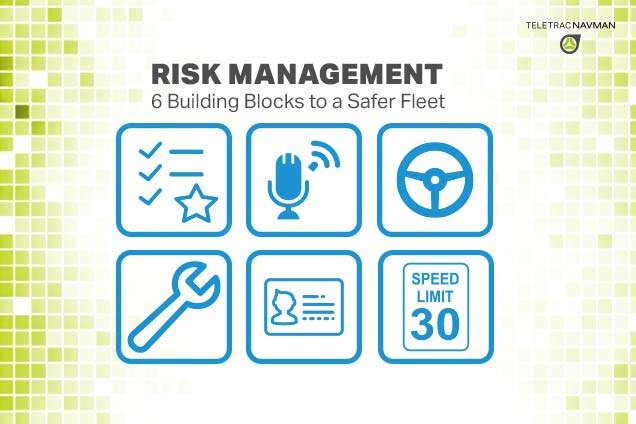Proactively Managing Risk Through Technology

Managing risk within a fleet is no easy feat. From regulations and compliance, to vehicle maintenance and driver performance, business owners must be conscious of how their fleet is performing. Neglecting a single detail—either by accident or by design—can prove disastrous.
Thanks to recent advancements, technology plays a significant part in this process, enabling today’s businesses to take a proactive approach to monitoring and controlling risk.
Here are some examples of how technology helps businesses maintain an effective risk management strategy and ultimately build a safer fleet:
- Driver Vehicle Inspection Reports (DVIR)
Vehicle inspections are the first line of defense in managing risk. Each day, drivers are required by the Department of Transportation to submit inspection details and complete a DVIR. Previously, this process was completed by hand and papers were submitted via fax. Today, in-vehicle tablets allow drivers to walk around their vehicle, perform an inspection with mobile devices and electronically send a digital report directly to fleet managers.
Additionally, telematics units can connect to a vehicle’s engine control module (ECM) and provide a real update on fault codes and other diagnostics. This ensures vehicle maintenance issues are visible and worked on promptly.
- Scheduled License Checks
Businesses must maintain proof of inspecting drivers’ operator licenses, certifying that they can drive vehicles in the appropriate class or cargo restrictions. But, simply looking at employees’ driving licenses on a regular basis does not meet this requirement; driver qualifications must be documented. Instead of conducting the verification process manually through a state’s motor vehicle department, dedicated online services provide an electronic alternative to license checks, including automated reminders and alerts if a license changes.
- Driver Performance Management
Understanding drivers’ driving behavior on the road is valuable when considering fleet risk, but seeing which drivers speed is only part of the equation. Telematics systems offer reports that show driver behavior patterns over an extended period, as well as alert fleet managers and drivers in real-time about unsafe driving behavior. Using these systems, managers identify deficiencies or unsafe practices and develop coaching or training programs to reduce risk.
- Effective Fleet Communication
Regular, consistent communication between the office and the field not only provides clarity, but streamlines many procedures to eliminate inefficiencies and minimize exposure. Communication between drivers and managers/dispatchers is achieved in real-time through one-touch, standardized text messages, or text windows for individually typed messages. Pre-drafted forms for an invoice, job order or delivery directions offer a safe method to send and receive detailed instructions.
- Maintenance Scheduling
Keeping vehicles well-maintained is a critical part of fleet management, effective customer service and overall operational efficiency. It’s also a requisite of the Federal Motor Carrier Safety Administration in compiling BASIC (Behavior Safety Analysis and Safety Improvement Category) scores.
Telematics systems alert fleet managers when service is due, keep maintenance and diagnostics reports for audit purposes and provide direct insight into service data that would otherwise go unseen. Forward planning ensures all legal boxes are checked and allows managers/owners to make smarter business decisions.
Developing and implementing a fleet risk management strategy is not an option but a necessity. By employing the right technology, risk management can seamlessly become part of any fleet’s culture. Those that take advantage of proactive risk management strategies tend to be more forward thinking, adaptable to change and robust. From lower insurance premiums, reduced maintenance costs, safer drivers and fewer accidents, the benefits are all there for the taking.
Teletrac Navman is a leading software-as-a-service (SaaS) provider leveraging location-based technology and services for managing mobile assets. With specialized solutions that deliver greater visibility into real-time insights and analytics, Teletrac Navman helps companies make better business decisions that enhance productivity and profitability. Its fleet and asset management technology uncovers information that would otherwise go unseen, helping customers reduce risk and confidently move their business forward with certainty. It tracks and manages more than 500,000 vehicles and assets for more than 40,000 companies around the world. The company is headquartered in Glenview, IL, with additional offices in the United States, United Kingdom, Australia, New Zealand and Mexico. For more information visit TeletracNavman.com.


